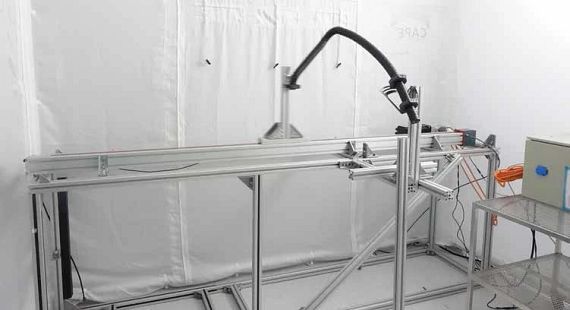Fibre-rod for robots in the dry cleanroom
The triflex® energy chain TRC.40.058.0.ESD in combination with the associated fibre-rod system represents the first certified
three-dimensionally movable energy supply for dry cleanroom applications. In the context of the increasingly present electromobility, which has become an integral part of our everyday lives, requirements for the automated production of lithium-ion batteries have to evolve.
three-dimensionally movable energy supply for dry cleanroom applications. In the context of the increasingly present electromobility, which has become an integral part of our everyday lives, requirements for the automated production of lithium-ion batteries have to evolve.

Tech up
- Energy chain suitable for dry cleanrooms and can move in multiple axes
- No contact between energy chain and robot thanks to the integrated fibre-rod module

Cost down
- Quick and simple assembly due to prefabricated modules
- Use of triflex R ESD bearing parts
- No damage to ESD-sensitive parts due to abrupt discharge

Proof
- Dry cleanroom ISO 4-5 certification from the Fraunhofer IPA

Sustainability
- chainge® standard material; individual chain links can be replaced and a further step towards e-mobility
Test report
TRC.40.058.0.ESD with fibre-rod module
The system was specifically designed for use on industrial robots to ensure a smooth and ideally contact-free production process. The integrated fibre glass rods serve to stabilise the energy chain up to the fifth axis and prevent contact between the industrial robot and the energy chain. The subsequent TRC energy chain enables the movements to be followed precisely and thus offers a high degree of flexibility, which is particularly advantageous in dynamic areas of application. With thousands of successful applications in conditions other than cleanrooms, the system has been tried and tested in practice and stands for reliability and efficiency.How a fibre-rod module works: VideoTest environment:
The system was tested in a dry cleanroom with a dew point of -40°C, which corresponds to a relative humidity of <1 % at a room temperature of 22°C and cleanroom class ISO 3 with 3 different parameter sets:

